
|
|
The Golden Triangle
Tour with Diwali Festival
|
(12
Days / 11 Nights)
(Delhi-Jaipur-Pachewar-Ranthambore-Fatehpur Sikri-Agra-Delhi)
(to view the route of this tour on a Map please click
here)
|

Welcome |
|
|
|
|
|
|
|
|
|
|
|
|
|
|
|
|
|
|
|
|
|
|
|
|
|
|
|
|
|
|
|
|
|
|
|
|
|
|
|
|
|
|
|
|
|
|
|
|
|
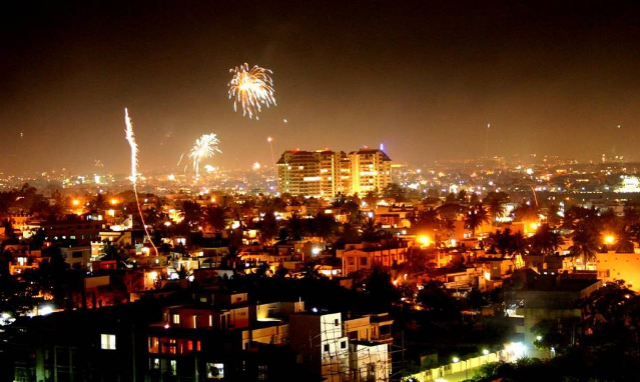
|
"Diwali", the festival of lights,
illuminates the darkness of the New Year's moon, and
strengthens our close friendships and knowledge, with a
self-realization!
Diwali is one of
the biggest festival of Hindus, celebrated with great
enthusiasm and happiness in India. The festival is celebrated
for five continuous days, where the third days is celebrated
as the main Diwali festival or 'Festival of lights'.
Different colorful varieties of fireworks are always
associated with this festival. On this auspicious day, people
light up diyas and candles all around their house. They
perform Laxmi Puja in the evening and seek divine blessings of
Goddess of Wealth. The festival od Diwali is never complete
without exchange of gifts. People present diwali gifts to all
near and dear ones.
|
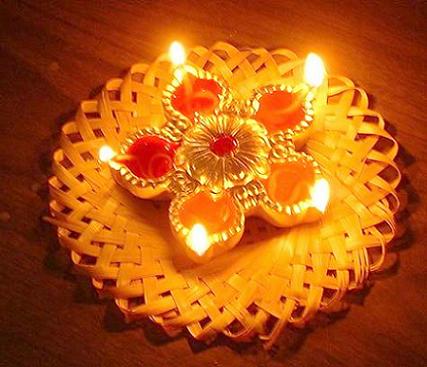 |
 |
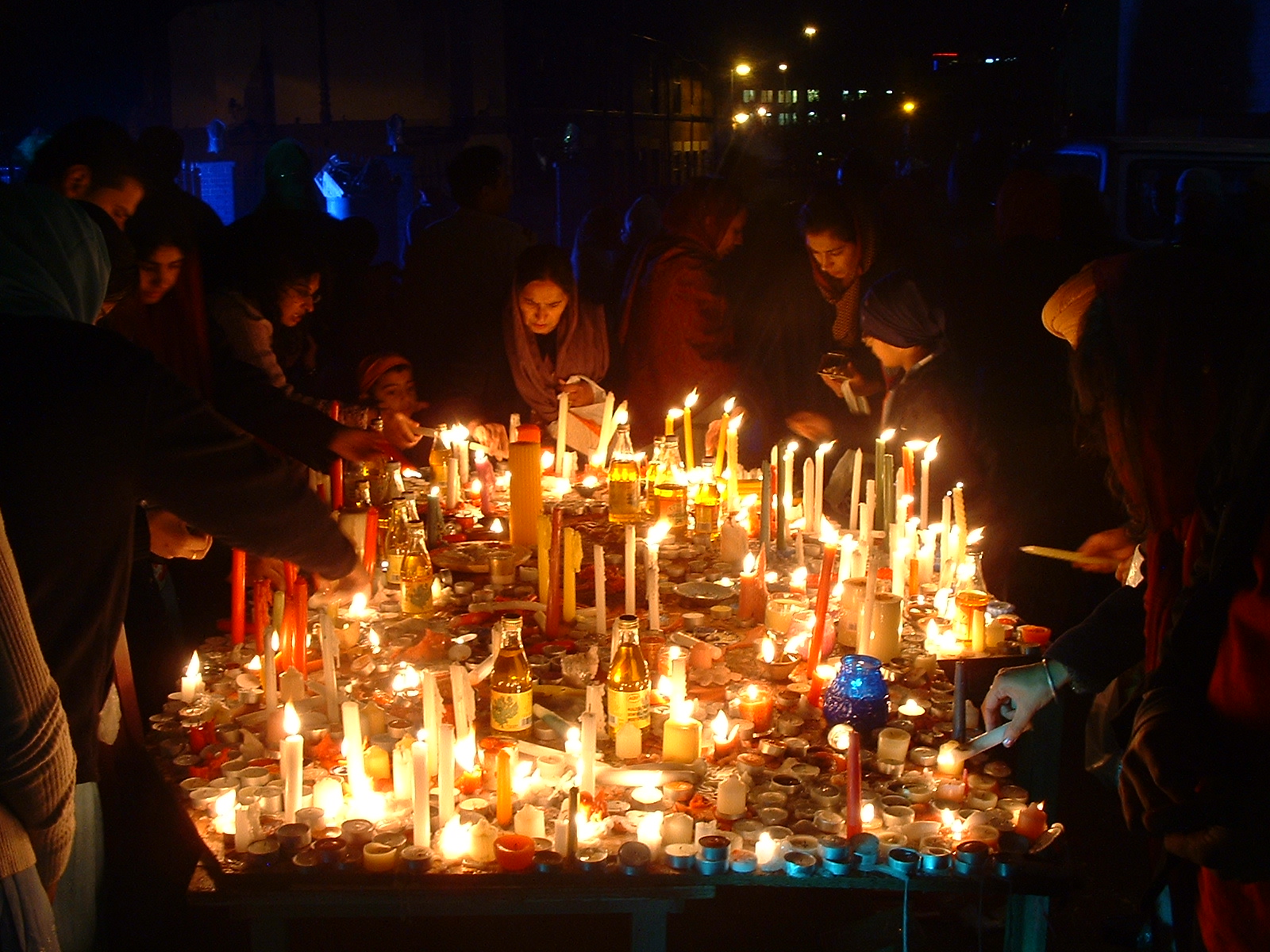 |
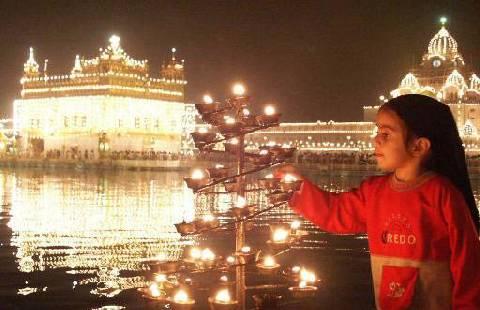 |
|
Diwali or Deepawali is the festival of lights and sweetness.
It is basically a symbol of the victory of good over evil,
brightness over darkness, and truth over falsity. Each and
every legend associated with this fabulous festival gives the
same message. The thick dark new-moon (Amavasya) night on
which the Diwali festival is celebrated, seems like a
full-moon (Purnima) night, because of the effulgent light of
numerous diyas or deepaks lighted on this night. These
diyasnot only make Diwali, the festival of lights, but they
also symbolize the supremacy and consequence of brightness
over darkness. The same message is given by the Hindu
Upanishads by saying, “Asato Ma Sadgamaya”. The lighted diyas
on Diwali also remind us of the same teaching of the
Upanishads.
Diya can be defined as a small earthen lamp that is specially
lit on Diwali for pujan and decoration purposes. A cotton wick
is used in diyas, and oil or ghee serves as the burning fuel.
Diyas are plain and colored, big and small, simple and fancy,
and so. Different types of diyas are appropriate for different
applications. Children could also make their own diyas as a
fun activity on Diwali. This could be done by using clay or
dough. It is better not to use a wool wick in ghee diyas.
As the festive season approaches near, markets get flooded
with various types of gifts, decoration, and puja items. The
crafted and designer diyas are one of the big attractions in
such markets. Diyas embellished with zari, painted patterns,
mirrors, etc. are quite enticing by their very appearance.
Diwali melas, markets, and haats, showcase a multitude of
handcrafted items made by ceramic and handicraft artists
throughout the country. Diwali diyas are one of the major
attractions in such markets. Besides the conventional single
spout diyas, multi spout diyas like 10, 11, and 21 spout
diyas, and Laxmi-Ganesha diyas can be seen in Diwali markets.
Also, multicolored and vibrant colored diyas present in diwali
haats and diwali melas look fabulous.
However old may be the tradition of diyas on Diwali, it has
never lost its significance and charm. Diwali celebrations are
incomplete and graceless without the use of Diwali diyas.
There is no doubt, diyas were, are, and will remain a
significant part of the Diwali festival.
|
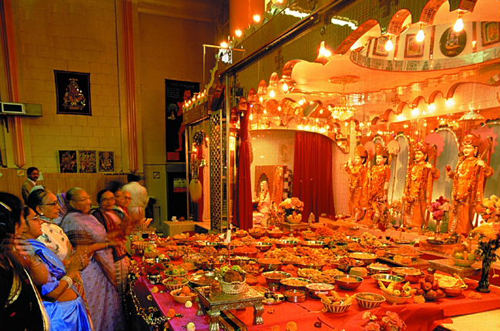 |
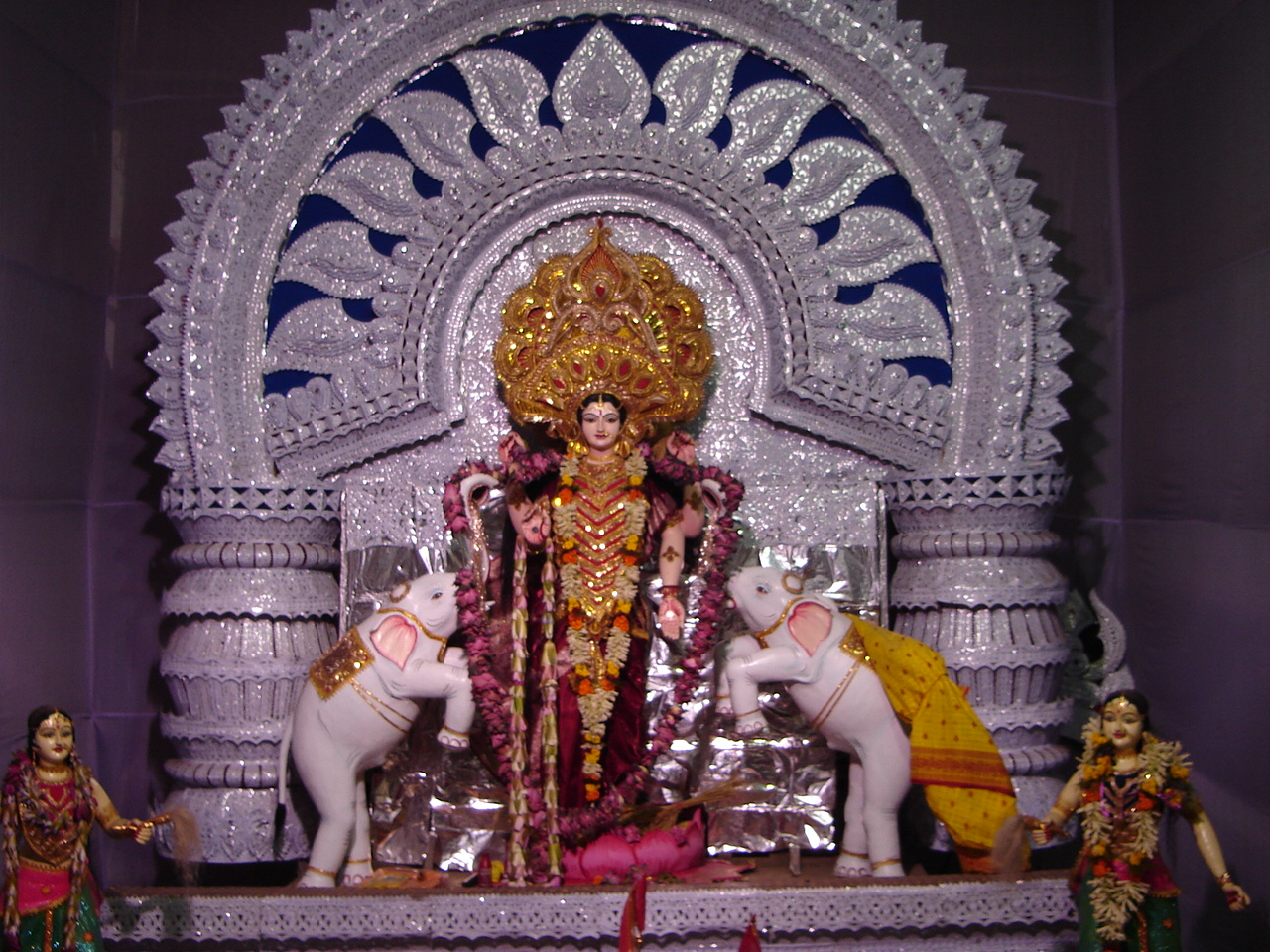 |
Diwali Mela
Diwali Mela or Diwali Fete are
extremely popular not just in India but all over the world.
These help people to celebrate the popular ‘Festival of
Lights’ with gaiety and enthusiasm within their own community.
Diwali Mela serves a very important role as the festival of
Diwali is celebrated in individual homes. Diwali Melas that
are normally celebrated on a weekend a few days after Diwali
helps to bring the community together and share the greetings
of the festival. For Hindu community outside India, Diwali
Mela is a means to bond with cultural roots and acquaint
children to the rich Indian culture and heritage.
|
|
Date of future Diwali
Diwali 2020 : Saturday, November 14
Diwali 2021 : Thuresday, November 04
Diwali 2022 : Monday, October 24 |
|
|
|
|
|
The
Significance & Meaning of Diwali
The Diwali festival in India has a deep significance since
ancient times. According to the Vedic culture, the message of
Diwali is to eradicate the world from darkness and lead it
towards the self-illuminated light within. Here, each
individual is likened to a brightly lit clay lamp. The message
is to collectively participate in the Endeavour, as it is not
just the effort of one individual. The differences between the
high and low are forgotten, as the aim is to usher in
equanimity and equality in society.
Traditionally, the celebration of the Diwali festival in India
is associated with a number of mythological events. In
Northern India, Diwali is celebrated to rejoice the return of
King Rama to his Kingdom Ayodhaya after a 14 year exile and
victory over the demon king Ravana. The people of Ayodhaya
light an array of clay lamps to celebrate his return.
In Southern India, another legend describes the victory of
Lord Krishna over the demon Narakasura. In western India, it
is celebrated in the honour of the King Bali who went to rule
the nether world by the order of Lord Vishnu.
|
|
Day 01. Flight to India
(Delhi)
Around midnight arrival in
Delhi.
The cosmopolitan city and capital Delhi is the main gateway for
travelers. You are met by an Indo Vacations representative and transferred
to the hotel.
|
|
Day 02. Old - New Delhi
This
morning is at leisure. Afternoon sightseeing in Old Delhi. We take a
Rickshaw Ride parallel to the
Red Fort through the old city and famous
Silk Road and Silver Bazaar. Sightseeing of Old Delhi includes
"Rajghat", the place where
Mahatma Gandhi was cremated and
Jama Masjid, the great mosque of old Delhi.
Today we also visit the famous “Humayun Tomb” which is the first
substantial example of Mughal architecture in India and “Qutub Minar” which is 71 meter high and was
constructed in 1199. Before we proceed to the Hotel we have a drive through
New Delhi where we see the
India Gate, Government Buildings and
Embassies.
|
 |
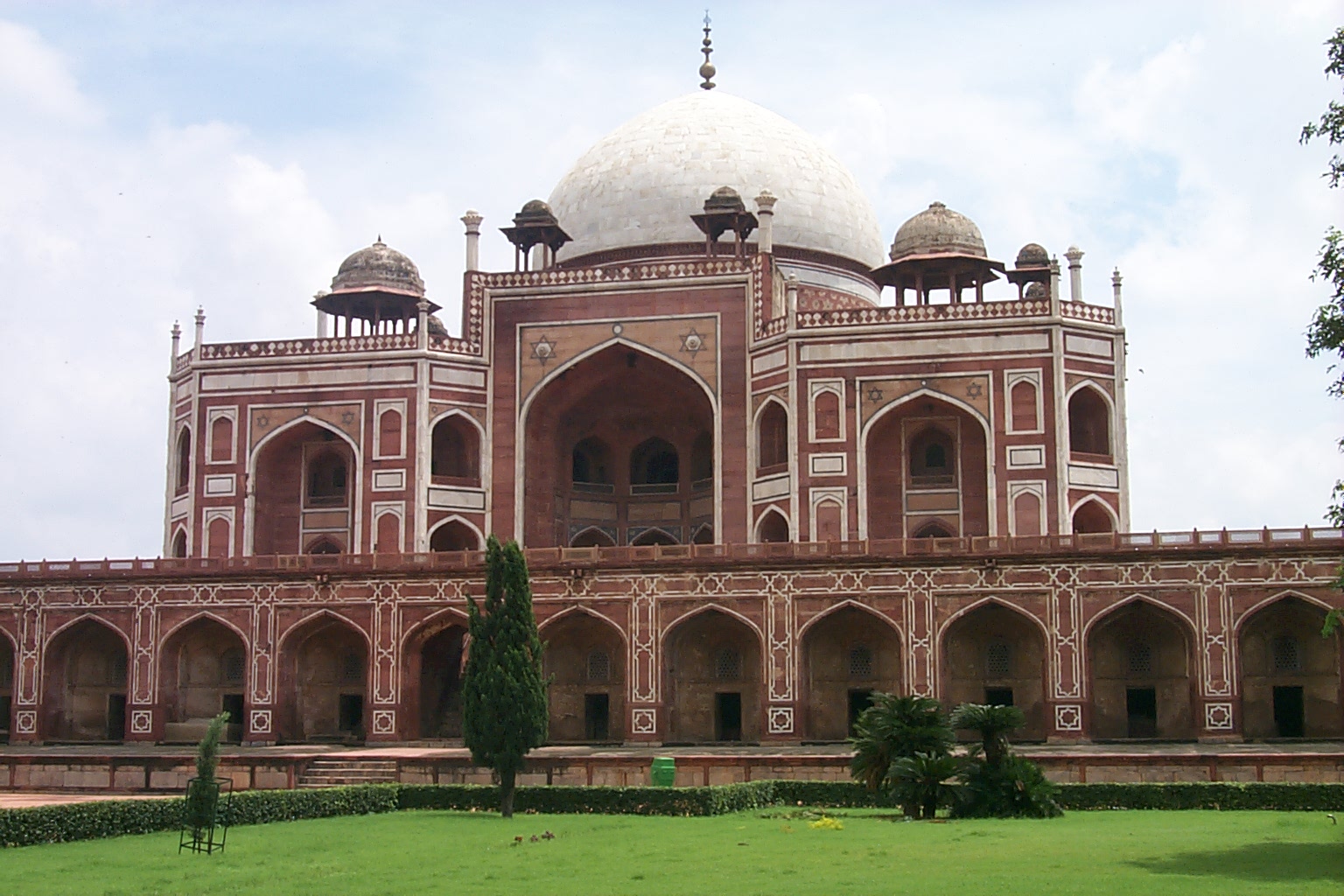 |
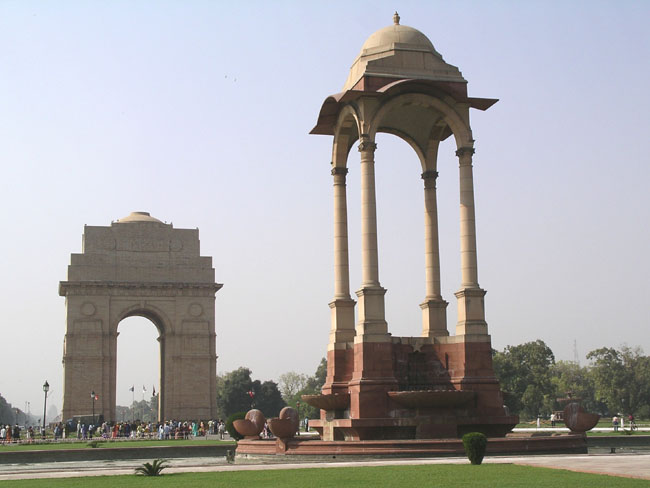 |
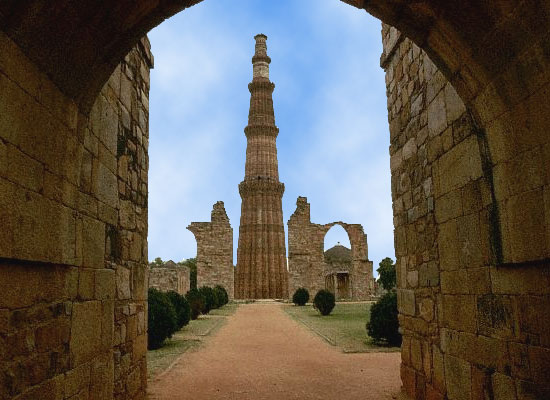 |
 |
|
Day 03. Delhi - Jaipur (about
270 km
/
5-6 Hours)
Today we drive to the Pink
City,
Jaipur. This city owes its name, foundations and careful planning to the
great warrior and astronomer, Maharaja Sawai Jai Singh II. Jaipur is the capital
of Rajasthan and famous for its handicrafts and precious and semiprecious
stones. In the afternoon we visit
the
City palace which is still the formal residence of the royal family, built
in a blend of the Rajasthani and Mughal
architecture. In the museum of the city
palace we visit the private collection of the Jaipur Maharajas. We continue to
Jantar Mantar,
a stone observatory, the largest of Jai Singh's five remarkable
observatories. Its complex instruments reveals us the secrets of medieval
Indian astronomy.
|
|
Day 4. Jaipur
November, Diwali is perhaps the most popular of all Indian festivals. The
origin of this festival can be traced back to the ancient Hindu epic
Ramayana, when
Lord Rama returend to this kingdom Ayodhya after 14 years of
exile. The whole kingdom was lit up with diyas (earthen lamps ) to celebrate
his return. To date, on Diwali day, houses all over India glow with the
twinkle of innumerable divas, candles and electric lights. The night is
illuminated with the flaming lights of fireworks, creating kaleidoscopic
design against the black canvas of the sky. During the Diwali celebration
decoration and lighting is done throughout the walled Pink City, with every
market competing with the others to pick-up the best decorated market award.
There are special prizes for the best decorated individual buildings as
well. Most people prefer walking through the street to enjoy this dazzling
extravanganza.
|
|
Day 05. Jaipur
After breakfast we drive to
the ancient capital of
Amber, laying 11 km. away from Jaipur. Amber was the
ancient capital of Kachhawaha dynasty for 6 centuries before it was moved to
newly created Jaipur. We will ascend to the Palace Fortress on the back of an
Elephant. Enroute to Amber we visit the
Hawa Mahal (Palace of the Winds), built
in 1799 AD, it contains 953 small casements with each having its own balcony.
The windows enabled cool air to circulate and the ladies to watch processions
below without being seen. In the afternoon we have a
walk through the colourful Bazaar of Jaipur and visit a factory to see the
famous block printing work being done since centuries in Jaipur.
In the evening we drive
through the new city of Jaipur and visit “Laxmi Narayan Mandir”, a Hindu temple
made out of white marble. We might have an opportunity here to observe a prayer
ceremony. Today we have dinner with a presentation of Indian music and
dance.
|
 |
 |
 |
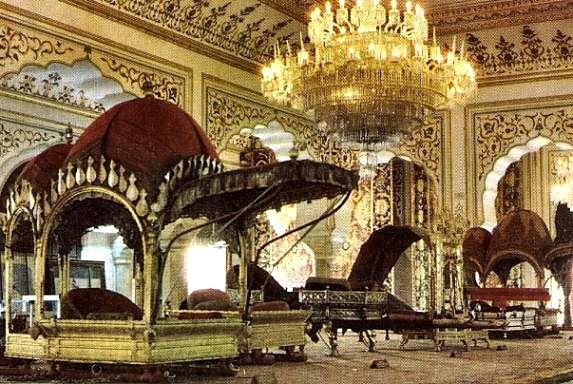 |
|
Day 06. Jaipur - Pachewar (about 105 kms
/ 2 Hours)
Today we leave Jaipur
drive to Pachewar. Pachewar is a mute yet vibrant village situated 90 kms.
away from Jaipur, the capital of Rajasthan, India. The 300 years old
picturesque fort of Pachewar has now been converted into a luxurious
heritage hotel with all modern amenities, where one can witness great
traditions of royal hospitality. It is located at a distance of 105 kms.
from Jaipur Airport and 90 kms. from Railway Station. Built in Indo-European
style, Hotel Pachewar Garh is undoubtedly one of the most popular Heritage
Hotels in Rajasthan. The fort houses intricate balconies and spacious
apartments adorned with elegant antique frescoes.
|
|
Day 07. Pachewar
-
Ranthambore (about 190 kms / 4 Hours)
Today after the breakfast we leave for
Ranthambore. Ranthambore is known for the
world famous Ranthambore National park. After a break and refreshment at our
hotel in Ranthambore we will explore the
Ranthambore National park on a Jeep.
Ranthambore National Park is surrounded by the Vindhyas and the Aravali
mountains and covers an area of 392 square km. The Tiger remains the biggest
attraction of the Ranthambore National Park.
|
|
Day 08. Ranthambore
In the early morning we again explore the park on jeeps. If we are lucky
enough we might have an audience with the tiger which are numerous in the
park.
|
 |
 |
|
Day 09. Ranthambore - Fatehpur Sikri
- Agra (about 250 km
/ 6-7 Hours)
In the early morning we again explore the park on jeeps. After the Jeep
Safari and perhaps with the memories of our encounter with tiger we leave
Rajasthan, the biggest state in India and drive through a series of fields,
small towns and villages to Agra. Enroute we make a stop and visit
Fatehpur Sikri, which
was once an imperial capital frozen in time, constructed by Akbar the Great
in the 16th century. This wonderful city constructed by red sand stones was
abandoned as abruptly as it had been built. It has been generally stated
that it was due to failing in the water supply. Late evening arrival in
Agra.
Rest of the day at leisure.
Day 10. Agra
We start today our sightseeing by a visit to the
Agra Fort, built by
three of the greatest Mughal emperors.
|
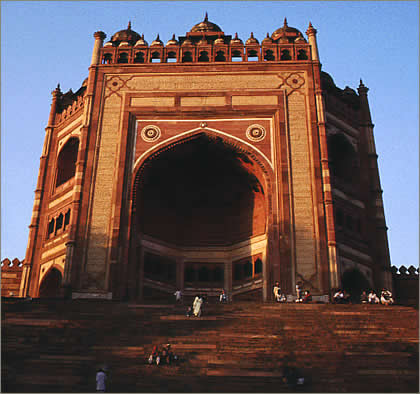 |
|
The
construction of this massive structure began in 1565 under Akbar's reign and
continued till the time of his grandson's reign, Shah Jahan who built the
impressive imperial quarters and mosque. After the visit of Agra Fort we
proceed to visit the most beautiful monument of India, the
Taj Mahal, an
enduring monument to love, with a continually fulfilling beauty. It was
built by the Mughal Emperor Shah Jahan between 1631-52, as a tomb and
memorial to his beloved wife Mumtaz Mahal (Jewel of the Palace), who died at
the age of 39 giving birth to her 14th child. We spend enough time at Taj
Mahal to take this impressive memory home. After the visit of Taj Mahal we
have a look at the famous fine marble inlay work which is still being done
in Agra by the descendants of the families of builders and artists of the
Taj Mahal. |
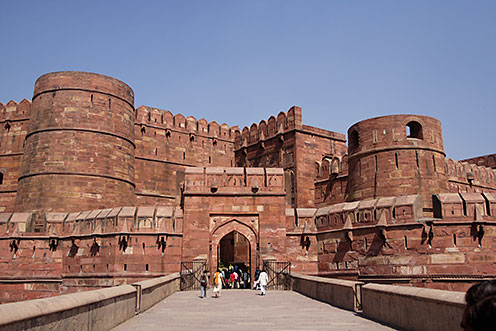 |
 |
|
Day 11. Agra -
Delhi
(about 200
km
/ 4
Hours)
In the morning after having breakfast we drive to Delhi. Arrival in Delhi in
the afternoon. The rest of the day at leisure. (opportunity for the last
shopping or enjoy a massage in the Hotel)
Day 12.
Flight to Home
Around midnight flight to home destination.
|
|
Tour Reservation
To get more
information or to book this tour please submit the
Query Form or send us an
e-mail !
Your
booking will be activated only after we get a reconfirmation from
your side.
About
Hotels:
We
provide you the accommodation as per your budget mentioned above in
the table of hotels category for any of the booked tour. Hotels
provided by us are from budget to luxury class hotels. Luxury hotels are
all five stars or of above standard. Deluxe would be a combination of
3 and 4 star Hotels and standard would be a combination of 2 and 3
star or similar hotels. The criteria
for selecting hotels by us remains the best value of your money. We
also provide you wherever possible accommodation in heritage hotels.
Heritage Hotels are old Palaces, Forts and Grand mansions of Maharajas
which have been later renovated and converted into Hotels. Rooms are
decorated all individually. Rooms are comfortable, romantic and
present the flair of olden Maharaja days.
Up
|
|
Proposed
Hotels |
Nights |
Indo Vacations – Inclusions:
 Accommodation in a double room with shower
/bath & WC in the hotels as indicated.
Accommodation in a double room with shower
/bath & WC in the hotels as indicated.
 Half board (breakfast and dinner
in the booked Hotels).
Half board (breakfast and dinner
in the booked Hotels).
 Rickshaw ride in Delhi, Elephant ride in
Amber.
Rickshaw ride in Delhi, Elephant ride in
Amber.
 Jungle Safari in Ranthambore.
Jungle Safari in Ranthambore.
 Breakfast & Dinner in the Hotel during the
tour.
Breakfast & Dinner in the Hotel during the
tour.
 One Dinner will be with a presentation of
Indian music and dance.
One Dinner will be with a presentation of
Indian music and dance.
 An experienced English speaking Tour Guide /
Tour Escort for the local sightseeing
throughout the whole tour (An Accompanying
Tour Escort will be provided on the group
strength above 10 traveler).
An experienced English speaking Tour Guide /
Tour Escort for the local sightseeing
throughout the whole tour (An Accompanying
Tour Escort will be provided on the group
strength above 10 traveler).
 An air-conditioned vehicle, including
insurance, fuel etc. with chauffeur
(experienced, reliable and English speaking)
during the entire tour.
An air-conditioned vehicle, including
insurance, fuel etc. with chauffeur
(experienced, reliable and English speaking)
during the entire tour.
 All entrance fees
of the mouments as per the tour itineray.
All entrance fees
of the mouments as per the tour itineray.
 All
taxes.
All
taxes.
Not included are:
International Flights,
Camera fees, gratitude, drinks and personal expenses of any nature!
Note:
 We suggest that you book the international
flights in your country as this is mostly
cheaper.
We suggest that you book the international
flights in your country as this is mostly
cheaper.
 Please note you will need a visitor visa for
India. We recommend to apply for the same well
in advance.
Please note you will need a visitor visa for
India. We recommend to apply for the same well
in advance.
 For individual travelers joining the group
will not be charged extra for both the
airport transfers (advance notice required)
For individual travelers joining the group
will not be charged extra for both the
airport transfers (advance notice required)
 If the desired travelers do not register for
the tour – An option will be available to operate the group tour
with less people with some extra charges. These charges will be informed well in advance and till then there is no obligation or no
cancellation
charges of registration.
If the desired travelers do not register for
the tour – An option will be available to operate the group tour
with less people with some extra charges. These charges will be informed well in advance and till then there is no obligation or no
cancellation
charges of registration.
 Registration for the group tour with Indo
Vacations is without any cost. Only at the
time of confirmation we will send you the
travel documents and ask for 25 % of the total
amount as advance payment. The due amount can
be paid after your arrival in India. (more
information is available on query).
Registration for the group tour with Indo
Vacations is without any cost. Only at the
time of confirmation we will send you the
travel documents and ask for 25 % of the total
amount as advance payment. The due amount can
be paid after your arrival in India. (more
information is available on query).
 Indo Vacations reserve the right of changes
which may be beyond our control.
Indo Vacations reserve the right of changes
which may be beyond our control.
|
|
Hotel Florence, Delhi*** |
Delhi
3 |
|
Hotel Ramada /
Park Prime**** |
Jaipur
3
|
|
Fort Pachewar (Heritage)*** |
Pachewar
1 |
|
Hotel Tiger Den (Resort)*** |
Ranthambore
2 |
|
Hotel Howard Park Plaza**** |
Agra
2 |
|
Total
Nights |
11 |
|
Heritage Hotels:
Heritage Hotels are old Palaces, Forts and Grand
mansions of Maharajas which have been later
renovated and converted into Hotels. Rooms are
decorated all individually. Rooms are
comfortable, romantic and present the flair of
olden Maharaja days.
Details for the vehicles used are available at
the below given links:
For 1 person – Tata Indigo - (4 seats)
http://www.indovacations.net/english/tataindigo.htm
For 2 person – Tata Indigo - (4 seats)
http://www.indovacations.net/english/tataindigo.htm
For 3 person – Tata Indigo - (4 seats)
http://www.indovacations.net/english/tataindigo.htm
For 3 - 5 person – Tavera Chevrolet / Toyota
Innova - (6 seats)
http://www.indovacations.net/english/tavera.htm;
http://www.indovacations.net/english/ToyotaInnova.htm
For 6-9 person - Tempo Traveler - (10 seats)
http://www.indovacations.net/english/tempotraveler.htm;
Testimonials &
References from the customers who already
traveled with us!
|
|
|
|
|
|
|
|
|
|
|
www.indovacations.net
Copyright © Indo
Vacations. All Rights Reserved. |






















